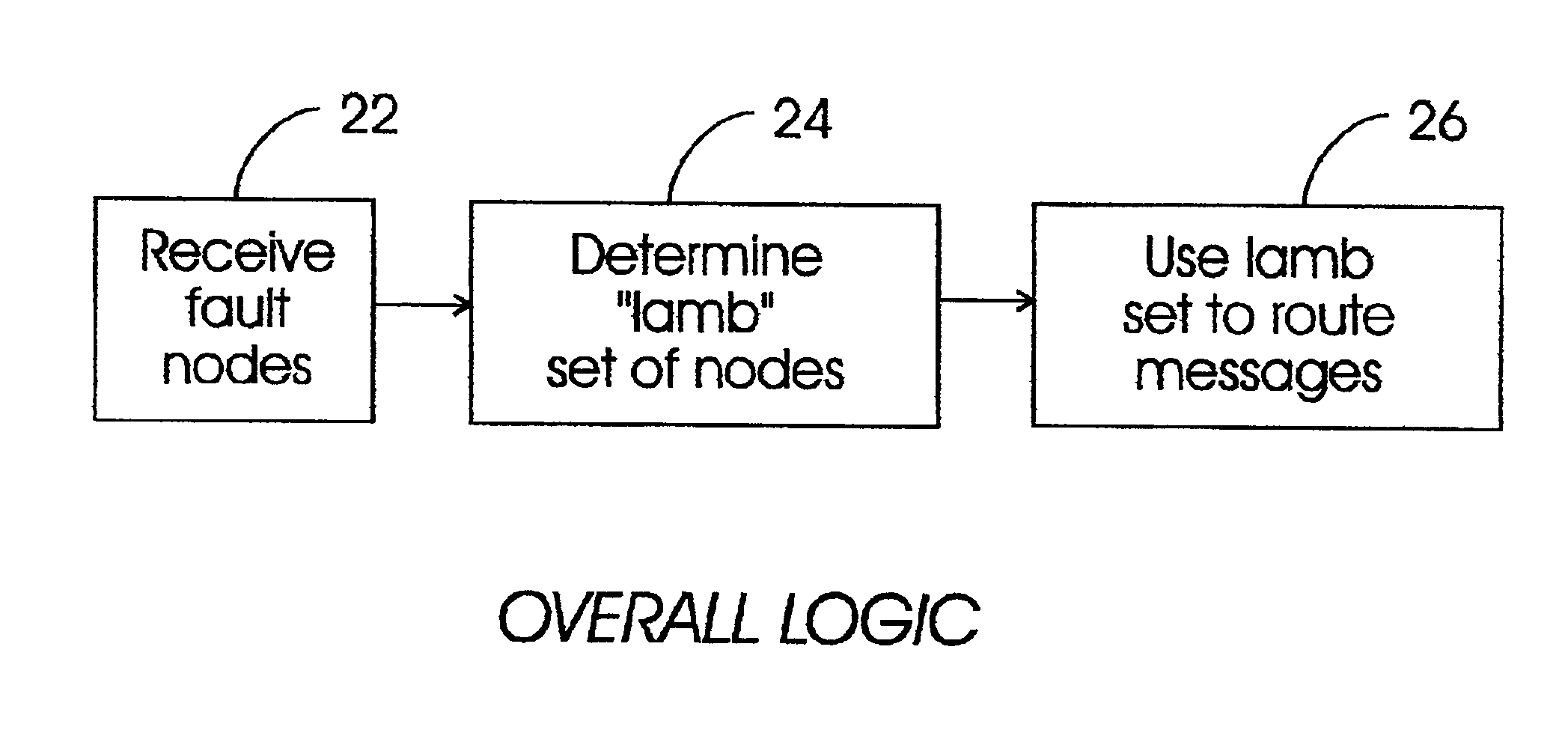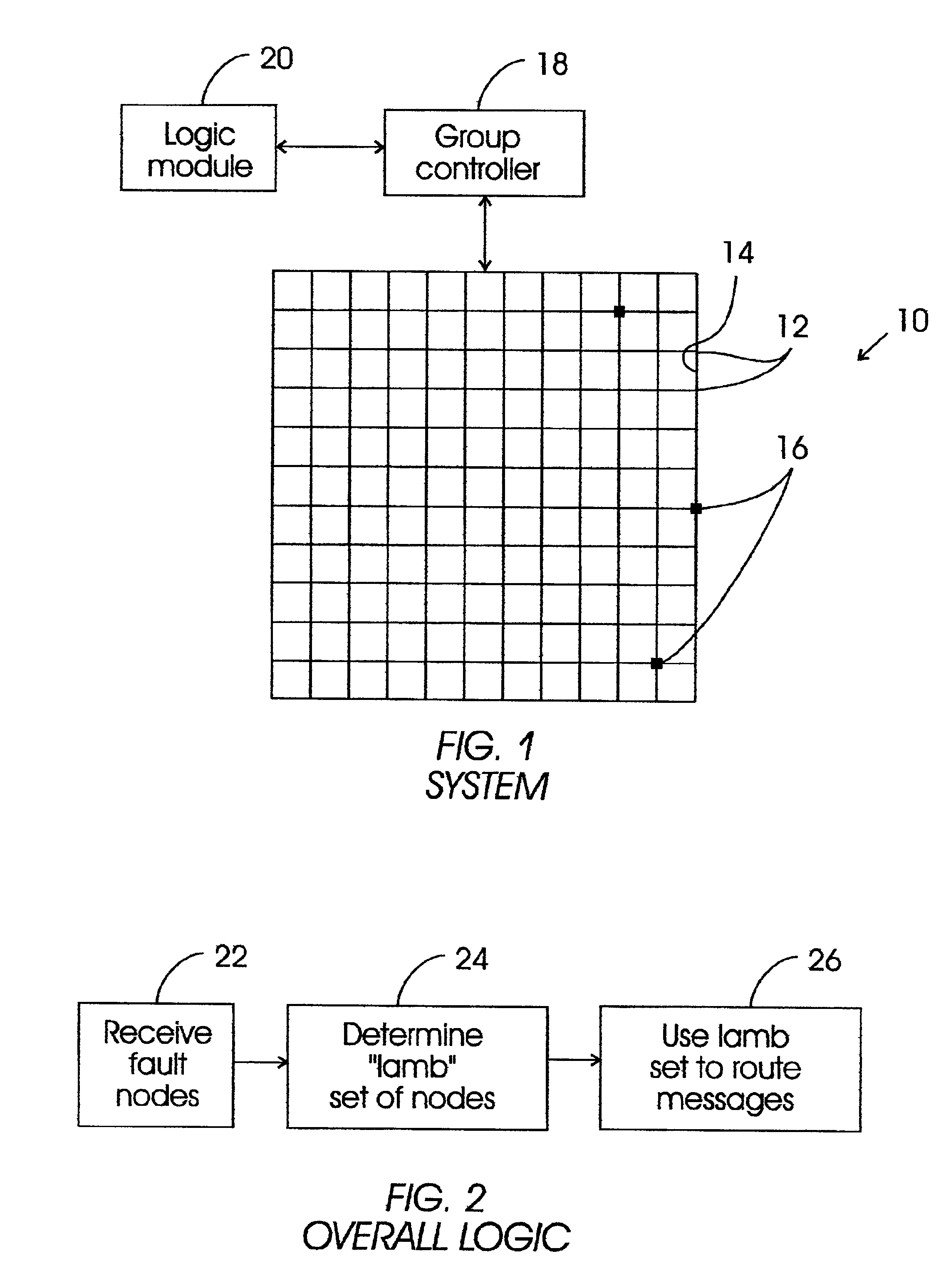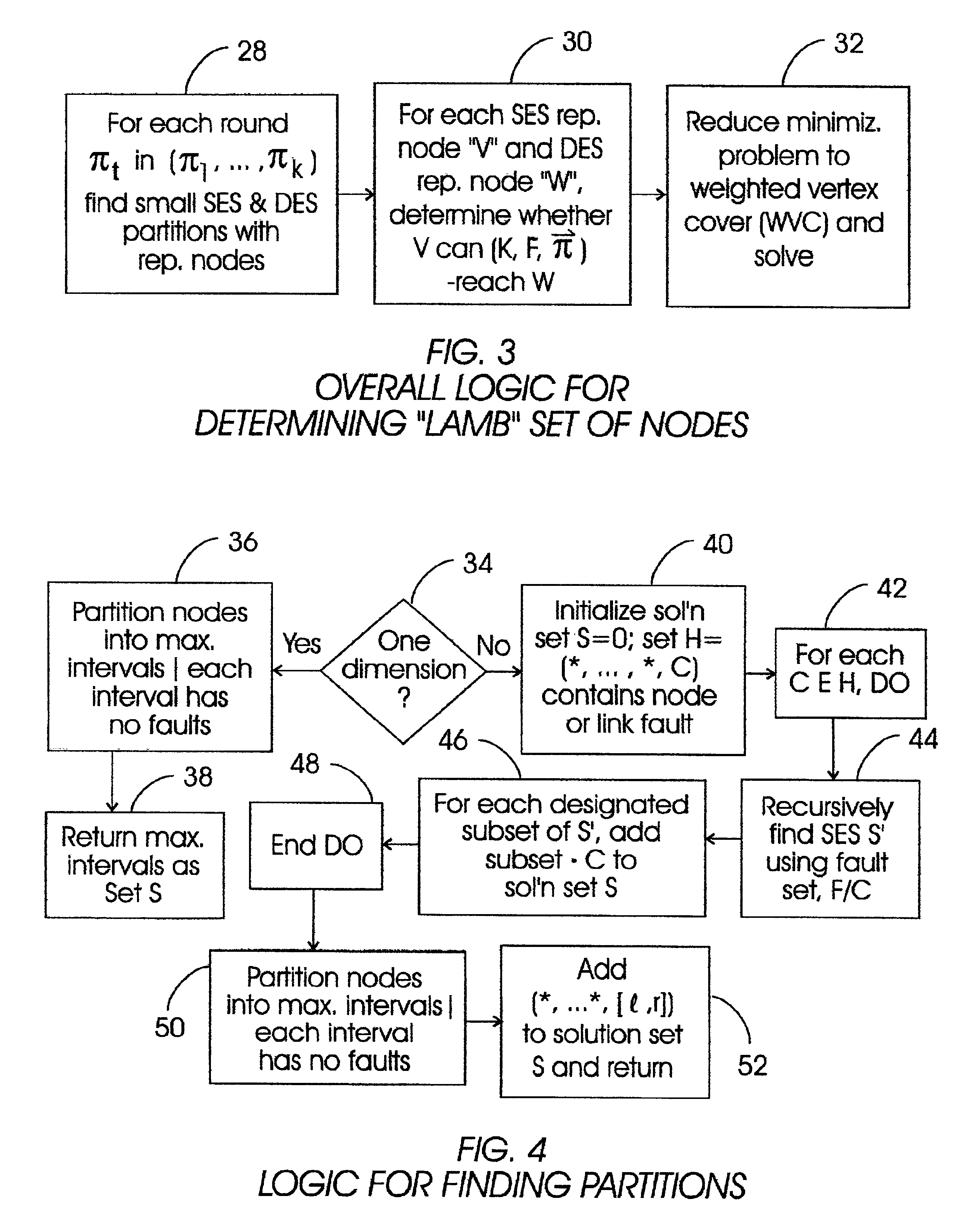System and method for fault tolerance in multi-node system
- Summary
- Abstract
- Description
- Claims
- Application Information
AI Technical Summary
Benefits of technology
Problems solved by technology
Method used
Image
Examples
Embodiment Construction
[0027]Referring initially to FIG. 1, a multi-node computing system is shown, generally designated 10. As shown, the system 10 includes a network of nodes 12 connected together by links 14. Some of the nodes are faulty nodes 16. Some links 14 may also fail as well; for convenience, a failed link 14 can be, but not must be, represented by modeling the nodes at the ends of the link 14“faulty” nodes 16. It is one non-limiting purpose of the present invention to promote the tolerance of the system 10 to faulty nodes during operation.
[0028]In one intended embodiment, although illustrated in FIG. 1 as a 12×12 grid of nodes for simplicity, the computer system 10 may be a multi-node system such as, by way of non-limiting example only, IBM's Blue Gene system. While Blue Gene has a mesh topology, other systems and other topologies can be used, such as but not limited to grids, meshes, hypercubes, and torus graphs.
[0029]A group controller 18 communicates with a preferably software-implemented l...
PUM
 Login to View More
Login to View More Abstract
Description
Claims
Application Information
 Login to View More
Login to View More - R&D
- Intellectual Property
- Life Sciences
- Materials
- Tech Scout
- Unparalleled Data Quality
- Higher Quality Content
- 60% Fewer Hallucinations
Browse by: Latest US Patents, China's latest patents, Technical Efficacy Thesaurus, Application Domain, Technology Topic, Popular Technical Reports.
© 2025 PatSnap. All rights reserved.Legal|Privacy policy|Modern Slavery Act Transparency Statement|Sitemap|About US| Contact US: help@patsnap.com



